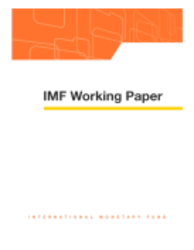
The Macroeconomic Effects of Capital Controls and the Stabilization of the Balance of Trade
A dynamic stochastic equilibrium model of a small open economy is used to quantify the macroeconomic effects of introducing capital controls to stabilize the balance of trade. This model focuses on the role of international trade and foreign debt as instruments that help smooth consumption in response to productivity or terms-of-trade disturbances. The model rationalizes some key empirical regularities that characterize business fluctuations and the dynamics of savings and investment in post-war Canada. The results show that capital controls have small effects on both the basic characteristics of macroeconomic fluctuations and the level of welfare. A fiscal strategy that successfully enforces capital controls by introducing taxes on foreign interest income is also studied in some detail.
Publication date: November 1990
ISBN: 9781451946055
$15.00
Add to Cart by clicking price of the language and format you'd like to purchase
Available Languages and Formats
| English |
Prices in red indicate formats that are not yet available but are forthcoming.
Topics covered in this book
This title contains information about the following subjects.
Click on a subject if you would like to see other titles with the same subjects.
capital controls , capital stock , probability distribution , domestic capital , standard deviation
Summary
Copyright © 2010 - 2025
Powered by:
AIDC



